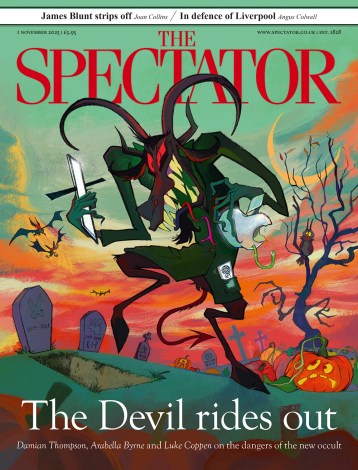It is tempting to think of this Budget as a triumph in expectation management. Rachel Reeves’s minions have briefed us on so many potential tax rises that surely the actual speech, when finally delivered, can’t be as bad as feared. Having been conditioned to expect the worst, we will all end up feeling pathetically grateful to Reeves for having spared us.
But having run through a few figures I am not so sure. Rather, I fear we may be in for whatever is the opposite of a rabbit out of the hat – a toad out of the hat, perhaps. Over the past few days we have been told to expect net tax rises of £35 billion – rather more than the £22 billion ‘black hole’ that Reeves claims was left in the public finances by the Tories (actually, £9 billion of that was public sector pay rises which Reeves herself announced, and which had nothing to do with the previous government).
But how to get to £35 billion in tax rises? A manifesto pledge-busting tuppence on employers’ National Insurance Contributions (NICs) would, it seems, get Reeves halfway there in one go: it is reported that it could raise £18 billion. But that is deceptive: getting the rest of the way is far tougher. VAT on school fees, according to the Labour party, would raise £1.7 billion. Of course, this may turn out to be hopelessly optimistic if more pupils are withdrawn from private schools than Labour expects, but for the purposes of totting up the figures as the Chancellor is presumably totting them up, that is the figure that should be used. Likewise, ending non-dom status could end up costing the government. If the Adam Smith Institute turns out to be right, it could end up shrinking the economy by £6.5 billion by 2035. But let’s assume that Reeves will be reckoning on raising between £3.2 and £3.6 billion, as has been floated in various places.
Keir Starmer has said that reports that the Chancellor might raise Capital Gains Tax (CGT) to 39 per cent are wide of the mark. But then, according to Treasury documents seen by the Guardian, raising it to around 35 per cent would raise £1 billion – not a great contribution, given how few people pay it. A 5 per cent hike on fuel duty, thus reversing the cut in 2022/23? That, it seems, would raise £5.5 billion. Then there’s Inheritance Tax (IHT). Removing George Osborne’s nil-rate band for family homes – which allows married couples to pass on up to £1 million of wealth free of IHT – could raise up to £2 billion, according to the Resolution Foundation, which has backed this.
So where are we now? Only at £32.1 billion – still £3 billion adrift of our £35 billion target. That gap could easily be filled by making pension tax relief less generous, given that the relief cost the Treasury £48.7 billion in 2022/23, according to its own figures. But then we have been led to believe that Reeves has abandoned plans to cut pension tax relief, after realising that it would mean senior public sector workers in defined benefit pension schemes having to be subjected to a tax charge. But could she be plotting something along these lines anyway, perhaps employing a disgraceful trick whereby public sector workers ended up receiving more tax relief than private pensioners (to gild their gold-plated pensions even more)?
Reeves could well announce reform or even replacement of council tax, but that would take time and so couldn’t add to her extra revenue for this Budget. Introducing extra council tax bands at the upper range of properties would be quicker and probably wouldn’t cause too much anguish, either. But even that would take time to value the properties.
To quote the song from West Side Story, ‘Something’s Coming’. The Budget could be even worse than we have been led to think.
Listen to more on Coffee House Shots:








Comments